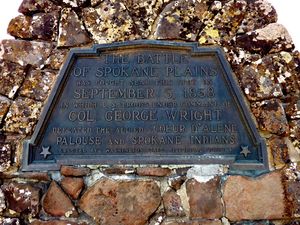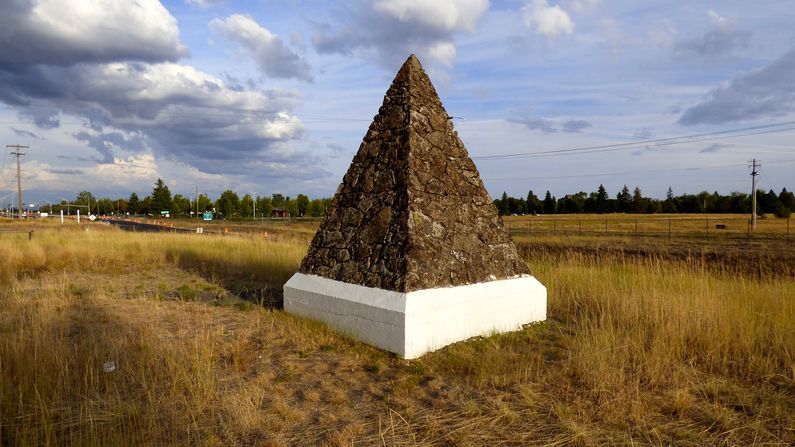Yakima War
|
Yakima War (1855-1858) - The Yakima (Yakama) Indians lived along the Columbia and Yakima Rivers in Washington Territory, on land desirable for white settlement and mining. With great difficulty, US officials negotiated a treaty with the Yakima and 13 other Indian tribes, all of whom ceded their lands and agreed to be placed on a single, large reservation. Some of the tribes decided to resist their removal and joined together under the leadership of Yakima chief Kamaiakan, whose forces successfully repulsed US troops for about three years. Other Indians in the territory rose up in rebellion, following the lead of the Yakima, and many skirmishes, raids, and battles took place.
Fort Walla Walla was the headquarters for Major Edward J. Steptoe, (Cullum 924), and the 9th U.S. Infantry operations during the Yakima War. In May 1858 Major Steptoe's 159 man command was engaged in a running battle with the hostile Indians, and he was forced to retreat with his command back to Fort Walla Walla on the night of 17 May 1858. The Steptoe defeat caused the Army to mount a full-scale campaign later that year. To support the campaign, Fort Taylor was established on 11 Aug 1858 on the south bank of the Snake River where the Tucannon River entered the Snake River. On 18 Aug 1858 Colonel George Wright, (Cullum 309), arrived at Fort Taylor which by then held 190 Dragoons, 400 artillerymen and 90 infantry. He then began his campaign against the hostile Spokane, Coeur d'Alene, and Palouse Indians tribes.  Finally, at the Battles of Four Lakes (1 Sep 1858) and at Spokane Plains, (5 Sep 1858), the last hostile tribes were decisively defeated and afterward placed on reservations, although a few tribes remained outside them. Kamaiakan fled to Canada, but 24 other chiefs were captured and hanged or shot. Colonel George Wright's campaign lasted just five weeks and was marked by victories in the field and summary executions of those deemed guilty or complicit in the Steptoe defeat and other attacks.
See Also: Sources:
Links:
| ||||
